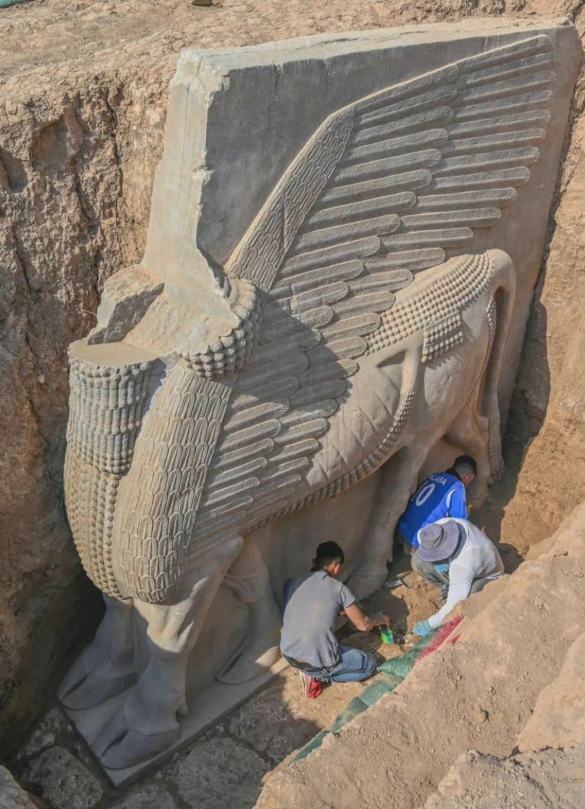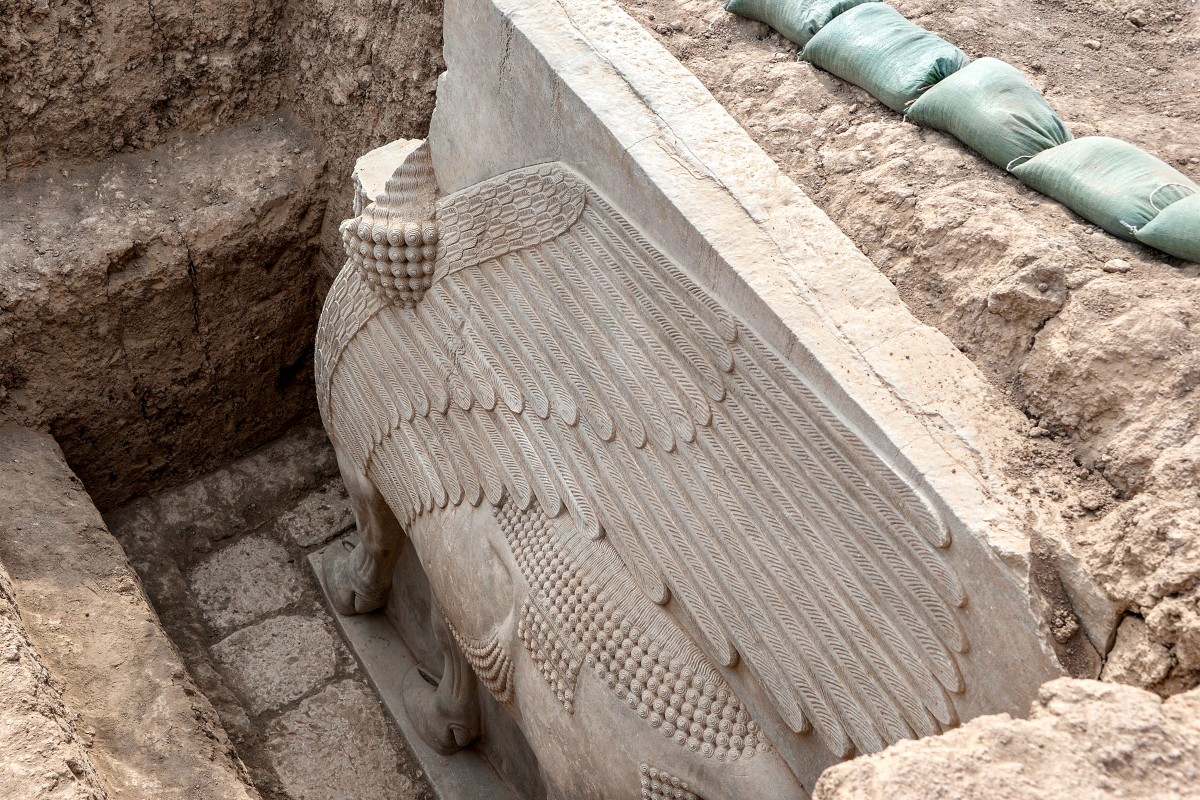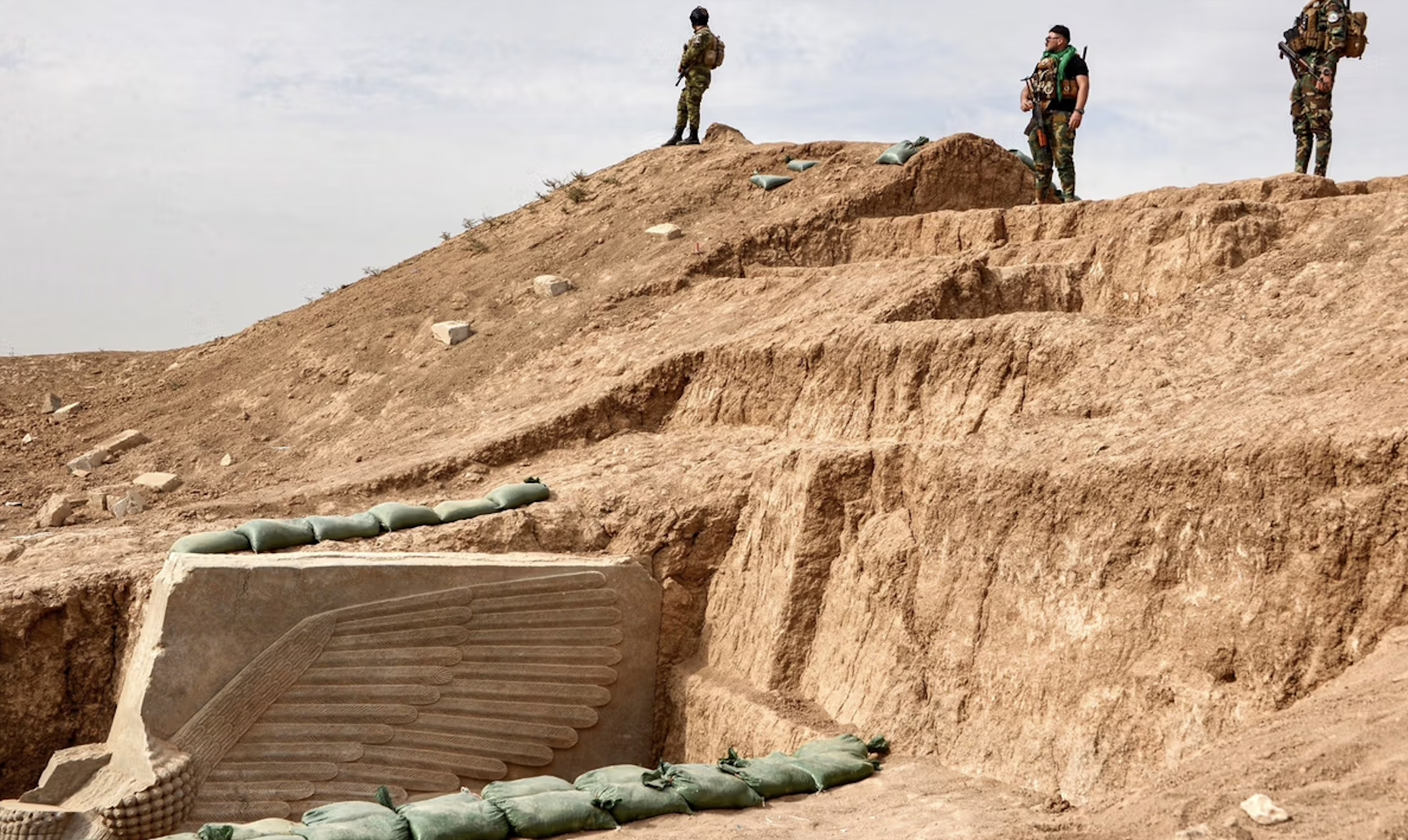In November 2023, archaeologists made a breathtaking discovery in northern Iraq that has electrified the archaeological community worldwide. A colossal 18-ton statue of an Assyrian deity, dating back approximately 2,700 years, emerged from the ancient soil, providing a remarkable window into one of history’s most influential yet often overlooked empires.
The excavation site, located near the ancient city of Nineveh in modern-day Iraq, had been under systematic exploration for several years. However, nothing prepared the international team of archaeologists for the scale and significance of what they would unearth. Initial ground-penetrating radar had indicated a substantial object beneath the surface, but the true magnitude of the find only became apparent as the painstaking excavation progressed.
“We initially thought we might be looking at a fragmented architectural element,” explained Dr. Faisal Ibrahim, co-director of the excavation. “When we realized it was a nearly intact monumental statue, the excitement was indescribable.”
Standing over 15 feet tall, the limestone statue depicts a powerful Assyrian deity, believed to be Ashur, the supreme god of the Assyrian pantheon. The craftsmanship is exceptional, with intricate details preserved despite millennia underground. The deity wears an elaborate headdress adorned with divine symbols, while the muscular body displays the characteristic Assyrian artistic style that emphasized power and authority.
What makes this discovery particularly significant is its completeness. Most Assyrian monumental sculptures have been found damaged or deliberately defaced by conquering armies. This statue, protected by the collapse of the structure that once housed it, offers an unprecedented look at Assyrian religious artistry at its zenith.
The Assyrian Empire dominated the Near East from approximately 900 to 612 BCE, creating one of the ancient world’s first true multinational empires. At its height, Assyrian control stretched from Egypt to Iran, with administrative centers featuring monumental architecture and artistic achievements that influenced subsequent civilizations.
Despite this historical significance, Assyrian contributions have often been overshadowed by those of Egypt, Greece, and Rome in popular understanding of ancient history. This discovery serves as a powerful reminder of Assyria’s cultural and political importance.
“The Assyrians were master state-builders whose innovations in governance, military organization, and imperial administration set patterns that would be followed for centuries,” noted Professor Elaine Richards, a specialist in ancient Near Eastern civilizations. “This statue comes from a period when Assyrian art had reached its highest expression.”
The excavation and preservation of the statue presented enormous technical challenges. Weighing approximately 18 tons, the statue required specialized equipment and expertise to safely extract without damage. A team of conservators worked alongside archaeologists to stabilize the statue before it was carefully lifted from its resting place.
The discovery comes at a poignant time for Iraq’s cultural heritage, which has suffered devastating losses due to decades of conflict and looting. Iraqi authorities have hailed the find as a symbol of the nation’s resilient cultural legacy and its ongoing efforts to protect and showcase its archaeological treasures.
The statue is currently being studied and prepared for eventual display at the Iraq Museum in Baghdad, where it will join other masterpieces of Mesopotamian civilization. Preliminary analysis of inscriptions on the base may provide new insights into Assyrian religious practices and royal ideology during the empire’s final century.
“This isn’t just an Iraqi discovery—it’s a human discovery,” said Dr. Layla Mahmoud of Iraq’s State Board of Antiquities and Heritage. “The Assyrian empire represents one of humanity’s earliest experiments with creating a multicultural state. The artistic achievement this statue represents belongs to our shared human heritage.”
As work continues at the site, archaeologists believe more treasures may await discovery. The building complex where the statue was found appears to be a previously unknown temple or palace complex from the late Assyrian period.








